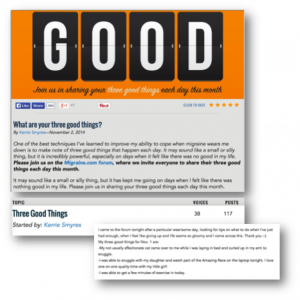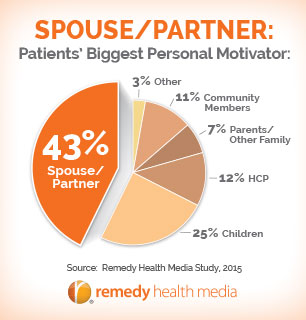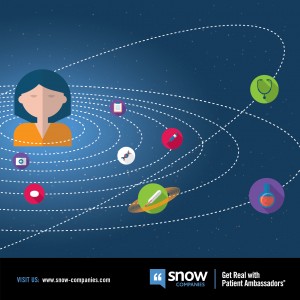In last month’s edition of the DTC Perspectives’ DTC in Focus newsletter, we discussed patient engagement and provided prescriptive thoughts on maintaining and even increasing patient commitment. This month, we take that thought one-step further (as well as, adhere to this month’s theme) and focus on patient adherence. The discussion includes whether the emphasis of such programs should be on both long and short-term medication adherence particularly in how they are resourced and measured.
A situational review
- Current support programs typically devote a large amount of time and money ensuring patients initiate therapy. However, these programs never allocate time or funding to safeguard that the patient maintains adherence after that time period.
- Studies indicate that patients with chronic diseases may not either grasp the severity of their condition; understand the literature they receive about their condition; or require multifaceted efforts to achieve adherence.[1]
- Current support programs operate in silos. While these programs are typically mapped out strategically, they are not executed in a coordinated fashion.
- These silos execute patient adherence programs:
- Ad agency
- PAP vendor
- Co-pay card company
- Reimbursement and benefits investigation vendor
- Specialty pharmacy
- Technology companies
- Consumers, patients, and caregivers often are not satisfied with the content and creative contained in patient adherence programs
- These targets at some point in the treatment process stop at Brand.com. All find the information initially helpful, but tend to look somewhere else for information because the information they want or need is not in the adherence program.
- Patient adherence programs today are like an inverted hourglass. The strategy is thin at the top, disparate and expansive in the middle due to the silo construct, and then the program strategy attempts to narrow again. Yet, often this does not occur.
- While all pharma brands say they have patient adherence programs, the reality is – and I am basing this information on my 20 years of experience – very few deeply engage and build a relationship with the patient; maybe 10% to 15% really execute this well. These programs work because senior leadership is committed to them for the long term, both in human and financial capital. (See last month’s column re: Biogen Idec.)
- These silos execute patient adherence programs:
Operational issues still exist today
Along with the barriers already mentioned to pharma’s delivering quality adherence programs, there are two more barriers, and they are formidable.
First, product managers are no longer brand champions. Their roles now resemble those of purchasing procurement agents who buy a single program; their sole hope is to get noticed by senior leaders.
The second, arguably more significant complication is the FDA, namely its regulations. Companies have allowed their legal and regulatory teams to make business decisions regarding programs that minimize risk in terms of providing the evidence and content that patients and healthcare professionals want. The pejorative natures of today’s drug marketing regulations are designed to educate, not inform. Grant Corbett, a psychologist we have worked with says pharma produces content from the perspective that patients and others affected by disease are not competent to understand the information so brand programs need to “educate them.”[2] He asserts companies should make the opposite assumption and assume the patient, caregiver and consumer understand their condition and work to provide information that fills in the knowledge gaps. This is where great programs in the marketplace are focusing their efforts today.
The short-term lead generation and conversion marketing strategies of patient adherence programs are no longer viable. The key to winning at the ground level is to have the program’s patient advocate be part of the solution that has been prescribed. It is paramount to ground a multi-channeled adherence program in a scientifically validated model to instill confidence in patient and caregiver. Patients and their care team need to believe they have the complete and long-term support needed to overcome their disease. Moreover, to accomplish this, the program needs resource and execution in a coordinated fashion. These are the factors creating a real competitive advantage in adherence programs today!
While industry spends $10s of millions on various aspects of the entire effort, that resource is cut up into smaller chunks or pools of money. This causes all parties to fight for their chunk of the pie and to lose interest with the whole strategy. Senior leaders, in this age of consolidation of resources, must consider these programs at a total cost level and ensure they all are driving value. That is why we advocate bringing back the role of a Brand Champion, an individual or set of individuals who commit to a longer-term career path with the brand, who can oversee the convergence and collapse of the silos – and decide how to spend the money.
Finally, we are big proponents of the net promoter score construct. Two or three simple questions added to any program to assess the patient’s willingness to recommend a product to a family member or friend. This simple measure helps leadership teams stay focused on the end goal of customer satisfaction, regardless of the program’s timeframe.
References:
- http://www.uspharmacist.com/content/s/200/c/33457/; http://www.ncbi.nlm.nih.gov/pmc/articles/PMC3068890/; http://www.ncbi.nlm.nih.gov/pubmed/12472330
- Grant Corbett, Behavior Change Solutions.













